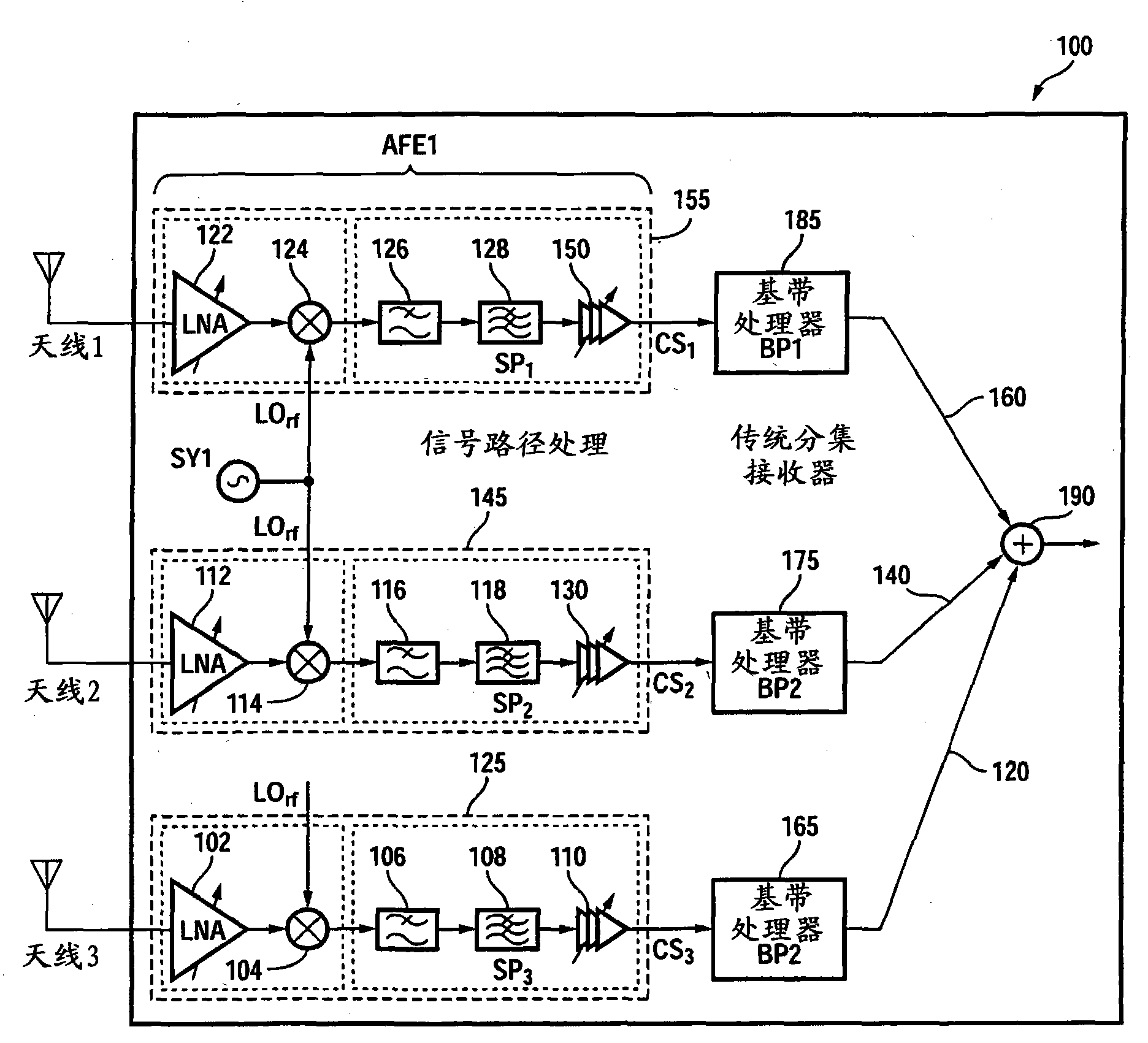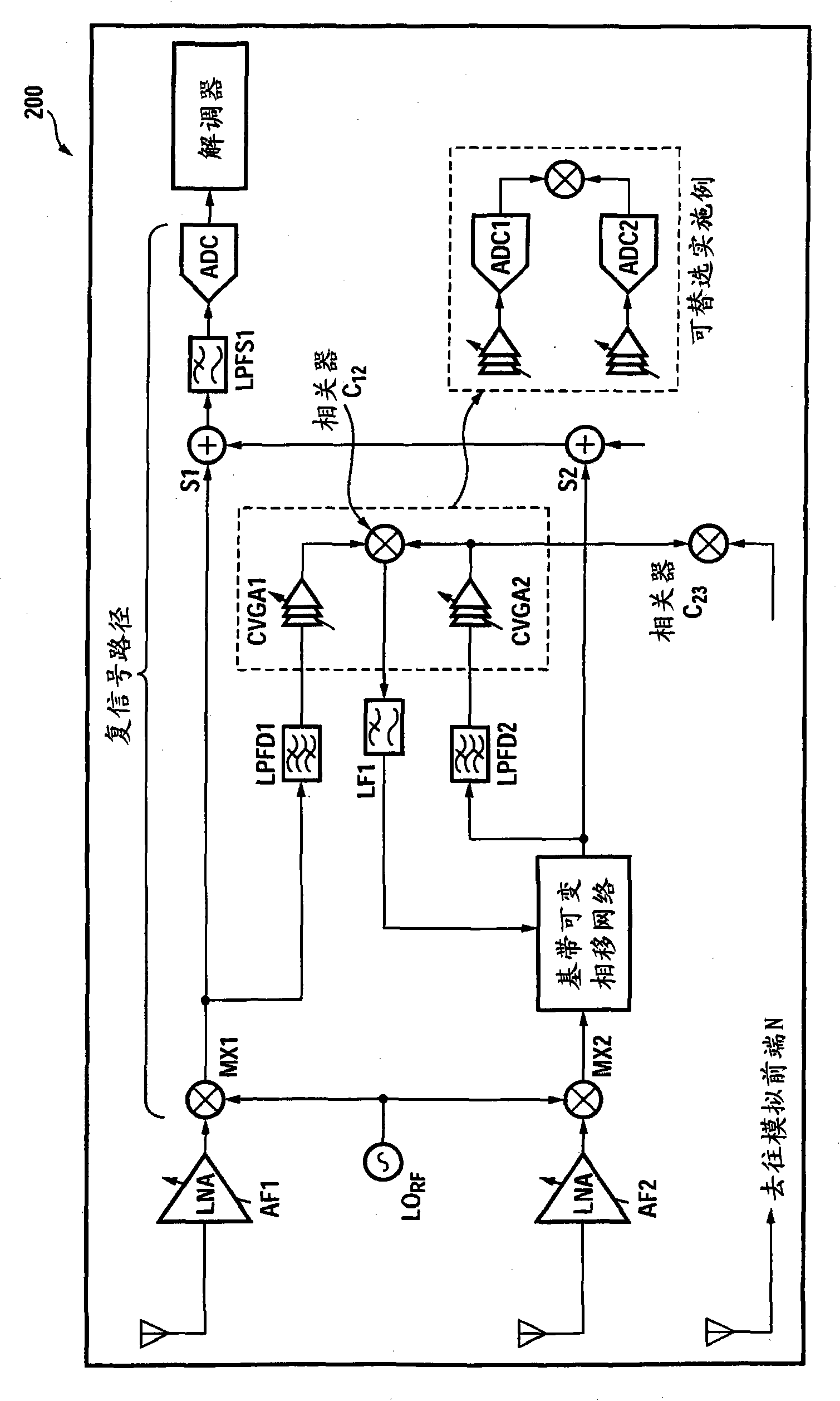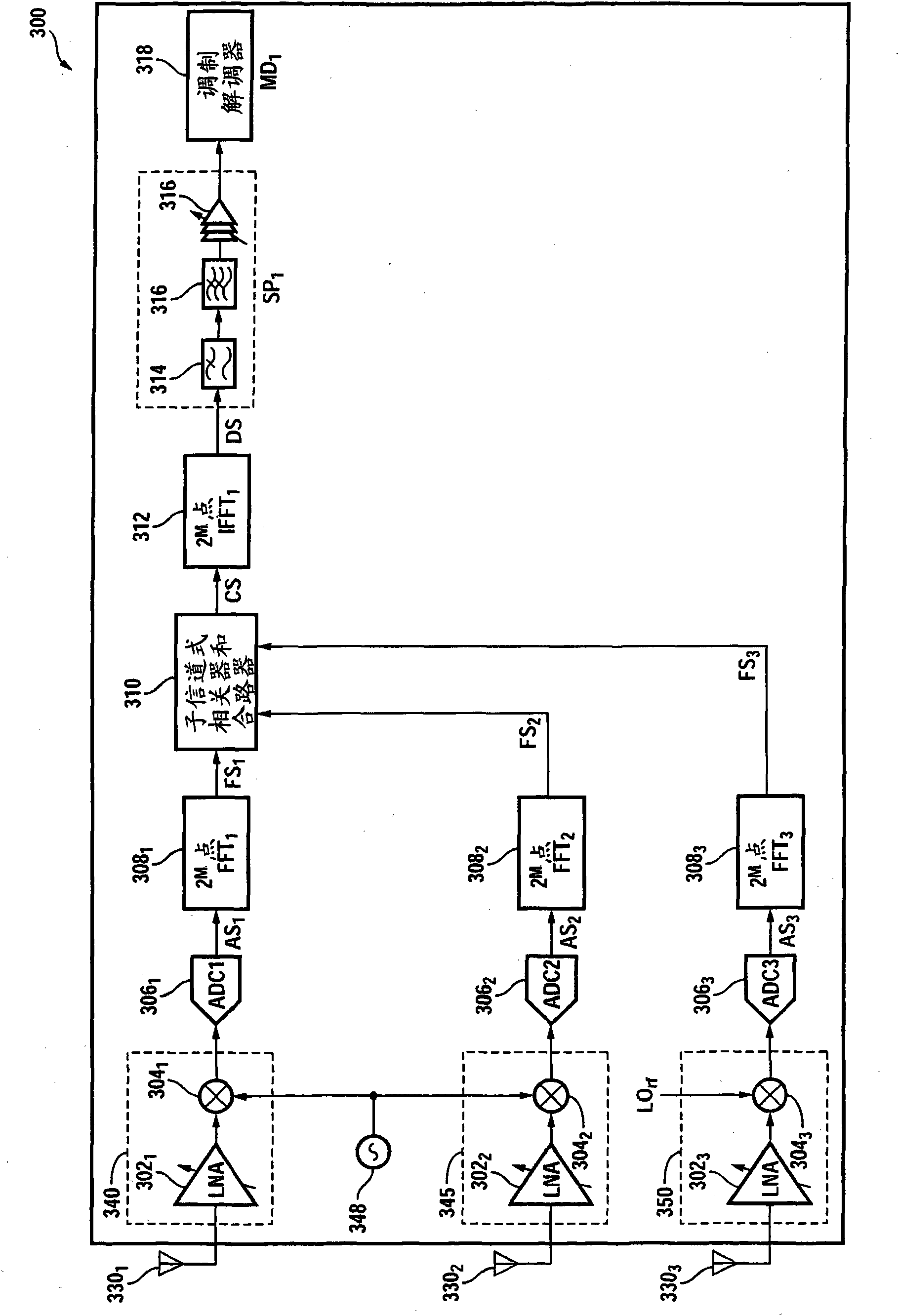Low-complexity diversity using coarse fft and subband-wise combining
An inverse transform and sub-technology, applied in the field of low-complexity diversity using sparse fast Fourier transform and sub-band merging, can solve the problem of doubling the cost, power and size of single-band MRC
- Summary
- Abstract
- Description
- Claims
- Application Information
AI Technical Summary
Problems solved by technology
Method used
Image
Examples
Embodiment Construction
[0017] According to one embodiment of the present invention, a low-complexity diversity receiver is a simple low-cost approach with enhanced performance in channels with relatively narrow coherence bandwidth. According to the present invention, the performance of a low complexity diversity receiver is comparable to that of a conventional diversity receiver using a complete and complete receive path for each branch of the diversity.
[0018] According to one embodiment of the invention, the receiver frequency band is amplified, down-converted, converted into a digital signal, and then divided into several sub-bands using, for example, Fast Fourier Transform (FFT) modules deployed in each of the complex diversity paths . In one embodiment, in-phase may be used to account for differences in phase of the various sub-bands. In another embodiment, maximum ratio combining (MRC) may be used to account for differences in phase and signal-to-noise ratio (SNR) of the sub-bands. The sub...
PUM
 Login to View More
Login to View More Abstract
Description
Claims
Application Information
 Login to View More
Login to View More - R&D
- Intellectual Property
- Life Sciences
- Materials
- Tech Scout
- Unparalleled Data Quality
- Higher Quality Content
- 60% Fewer Hallucinations
Browse by: Latest US Patents, China's latest patents, Technical Efficacy Thesaurus, Application Domain, Technology Topic, Popular Technical Reports.
© 2025 PatSnap. All rights reserved.Legal|Privacy policy|Modern Slavery Act Transparency Statement|Sitemap|About US| Contact US: help@patsnap.com



